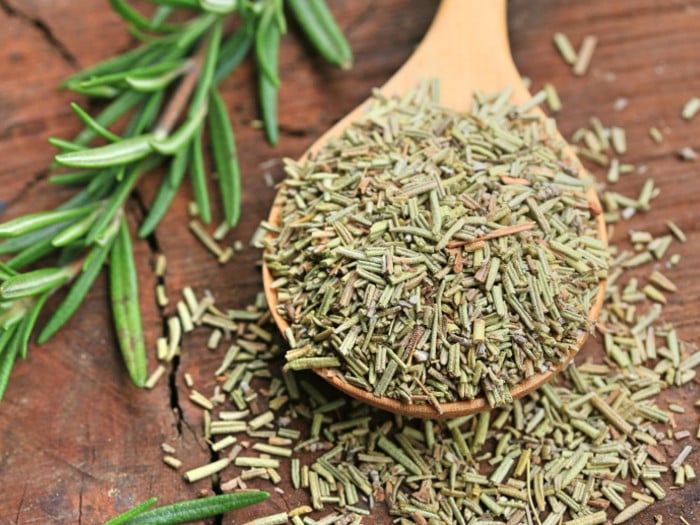You can’t quite describe the fragrance of rosemary but if you add the herb to buttery roasted potatoes or roast chicken, it adds a sublime flavor. You can also use it to make rosemary oil, an essential oil with a citrus-like, woodsy aroma that is often used in aromatherapy for an energizing effect. This Mediterranean herb can be easily grown as part of a herb garden and is sometimes even used as hedges. Here are helpful tips on how to cut, dry, and store rosemary. [1]
How To Cut, Dry, & Store Rosemary?
So you have got your rosemary pot in your kitchen window or your garden, and you want to know what is the best way to cut and dry the herb. We can help you out. Here are the top questions that people have about cutting and storing rosemary. [2]
How To Cut Rosemary?
To cut rosemary in such a way that it continues to grow healthily, it is best to cut one sprig of rosemary at a time. Here is the step-by-step method to cut this fragrant, woody herb.
- Always use scissors or pruning shears so that you can make clean cuts.
- Cut rosemary on the new growth. For this, you will have to look out for green stems.
- Cut the green stem just above where the two leaves of the herb are growing.
This method ensures two things. Firstly, when you cut the green stems instead of the woody ones, it helps new shoots to grow. Secondly, it also promotes healthy growth of the herb and you don’t have to look at a tall spindly herb pot. Make sure you cut rosemary regularly throughout the summer months to have a good amount to harvest for the next time. [3]

It’s very simple to cut and dry rosemary in your own home. Photo Credit: Shutterstock
What is the best time to cut rosemary?
Did you know that there is an optimal time to cut rosemary? Well, it’s true. You should cut the herbs just before they flower because that is the time when their fragrant oils are at their peak. So this way, you can get the most flavorful herbs to cook with. The best time to cut rosemary is in the morning when the dewdrops have just dried. Avoid cutting the herbs when the heat of the day is at its maximum as you may end up with dry leaves.
Drying Rosemary
Fresh leaves of rosemary are fragrant and easy to use but if you want to dry it, there are many methods to choose from. Remember to wash the rosemary sprigs before drying them.
Easy-breezy method: If it’s just a sprig or two, you can leave the herb on your kitchen counter for a day to dry.
Paper bag: For safety purposes, you can put rosemary sprigs in a brown paper bag and leave for up to three weeks in a warm, dry, and well-ventilated room.
Hanging a rosemary bouquet: You can make a bouquet of rosemary sprigs by tieing it with kitchen twine. Hang it for two to three weeks in a cool and well-ventilated area. You can also enjoy the fragrance of rosemary at the same time.
Using a dehydrator: You can either dehydrate entire sprigs or just the rosemary leaves. Lay them on dehydrator trays with plenty of space between them and dehydrate at 95°F or 35°C. You can do it for 8 to 10 hours, depending on the humidity levels.
Using the oven method: Place the rosemary sprigs on a baking tray lined with parchment paper. Put it in the oven on the lowest possible setting. This helps the herb to dry out until brittle, instead of being baked. You will have to constantly check it as oven times vary.
In the microwave: Place the rosemary sprigs between two paper towel pieces and nuke it for 30 seconds. Allow it to cool and then microwave it again for 30 seconds. The leaves should be dry. You can repeat the process if they don’t feel the leaves are dry enough.
How To Store Rosemary?
You should store herbs in an airtight container in a cool and dark place to retain their flavor. Dried rosemary keeps much longer than the fresh variety, but it is best to use it within a year.

